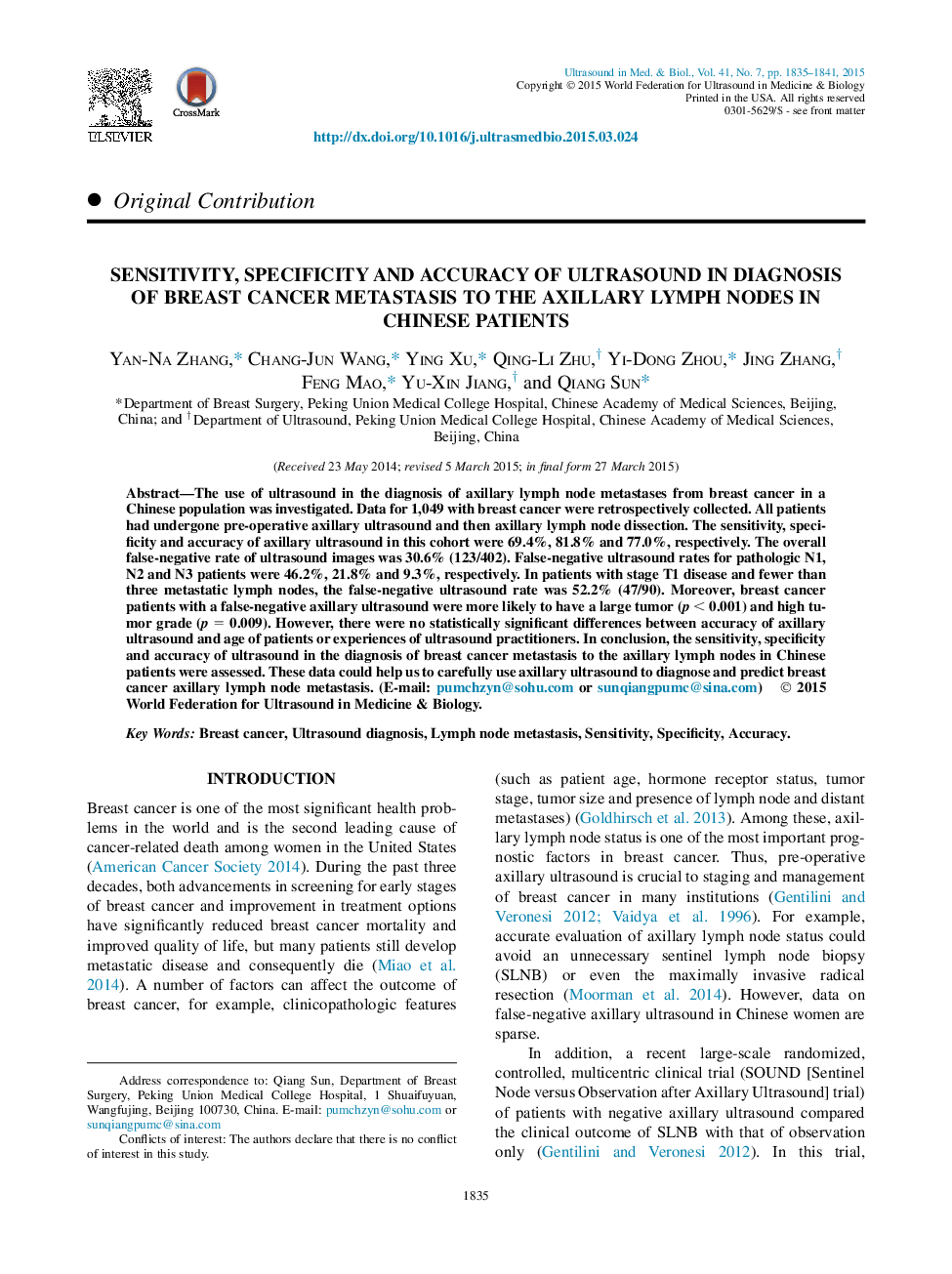| Article ID | Journal | Published Year | Pages | File Type |
|---|---|---|---|---|
| 10691230 | Ultrasound in Medicine & Biology | 2015 | 7 Pages |
Abstract
The use of ultrasound in the diagnosis of axillary lymph node metastases from breast cancer in a Chinese population was investigated. Data for 1,049 with breast cancer were retrospectively collected. All patients had undergone pre-operative axillary ultrasound and then axillary lymph node dissection. The sensitivity, specificity and accuracy of axillary ultrasound in this cohort were 69.4%, 81.8% and 77.0%, respectively. The overall false-negative rate of ultrasound images was 30.6% (123/402). False-negative ultrasound rates for pathologic N1, N2 and N3 patients were 46.2%, 21.8% and 9.3%, respectively. In patients with stage T1 disease and fewer than three metastatic lymph nodes, the false-negative ultrasound rate was 52.2% (47/90). Moreover, breast cancer patients with a false-negative axillary ultrasound were more likely to have a large tumor (p < 0.001) and high tumor grade (p = 0.009). However, there were no statistically significant differences between accuracy of axillary ultrasound and age of patients or experiences of ultrasound practitioners. In conclusion, the sensitivity, specificity and accuracy of ultrasound in the diagnosis of breast cancer metastasis to the axillary lymph nodes in Chinese patients were assessed. These data could help us to carefully use axillary ultrasound to diagnose and predict breast cancer axillary lymph node metastasis.
Related Topics
Physical Sciences and Engineering
Physics and Astronomy
Acoustics and Ultrasonics
Authors
Yan-Na Zhang, Chang-Jun Wang, Ying Xu, Qing-Li Zhu, Yi-Dong Zhou, Jing Zhang, Feng Mao, Yu-Xin Jiang, Qiang Sun,
